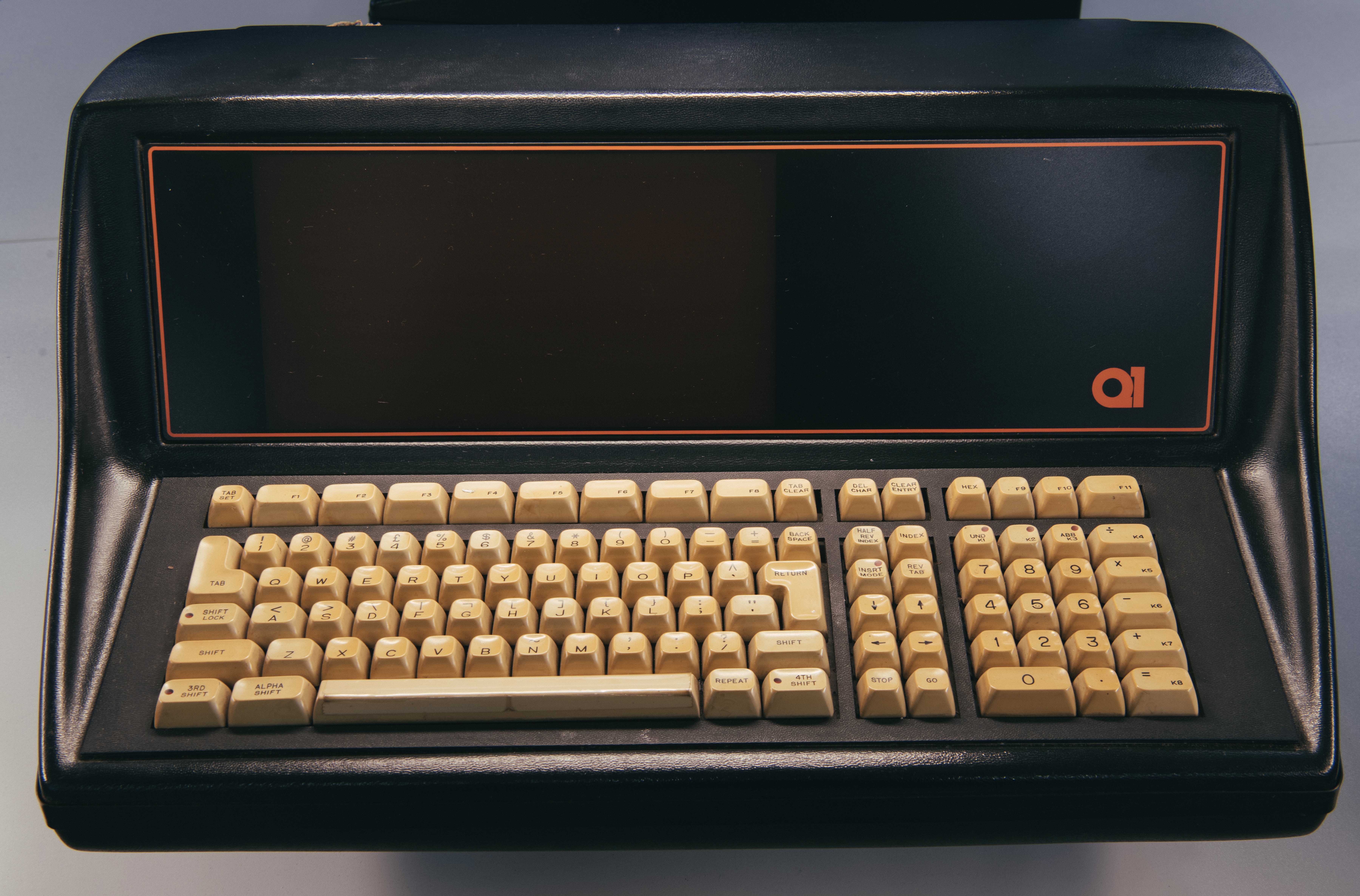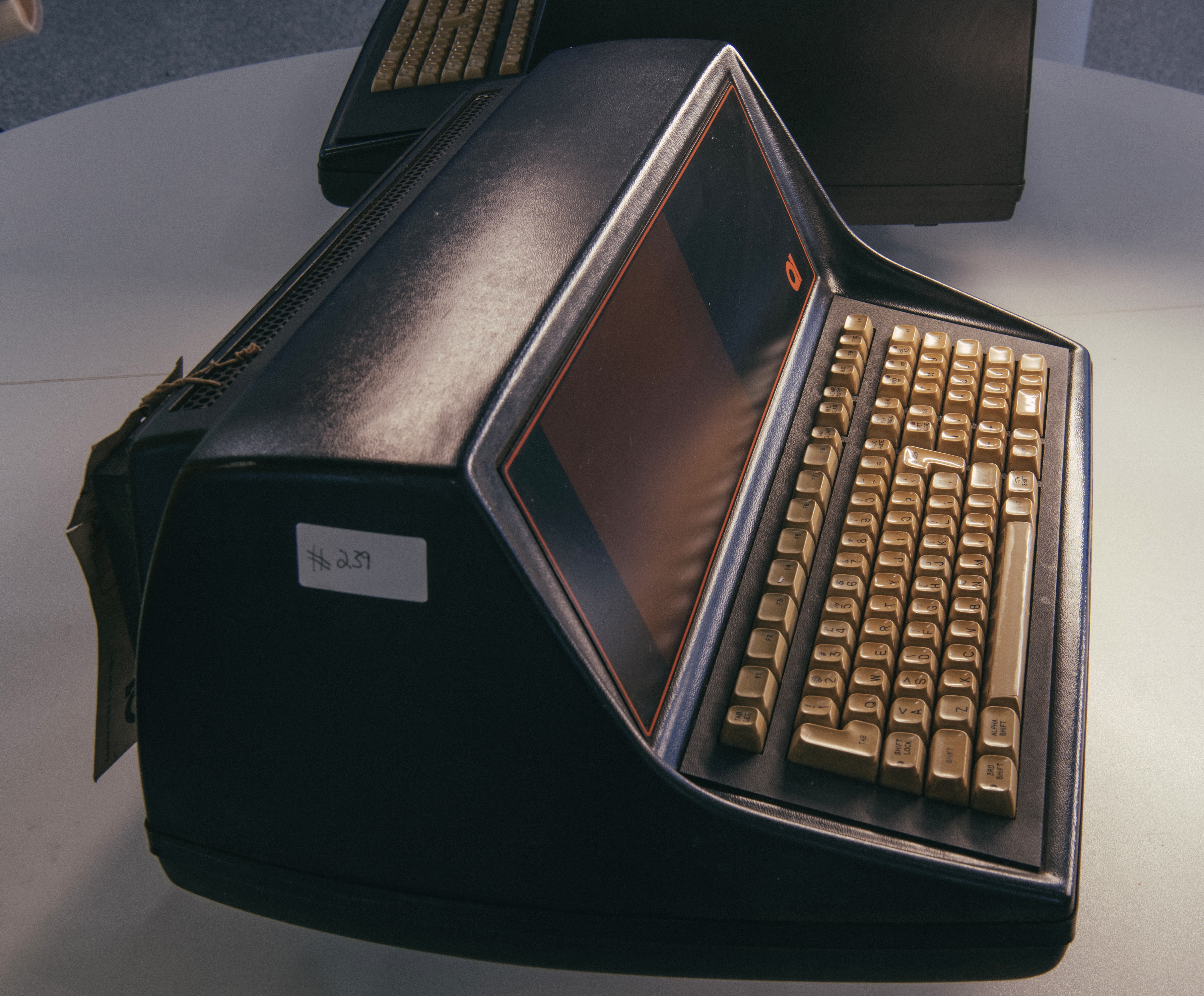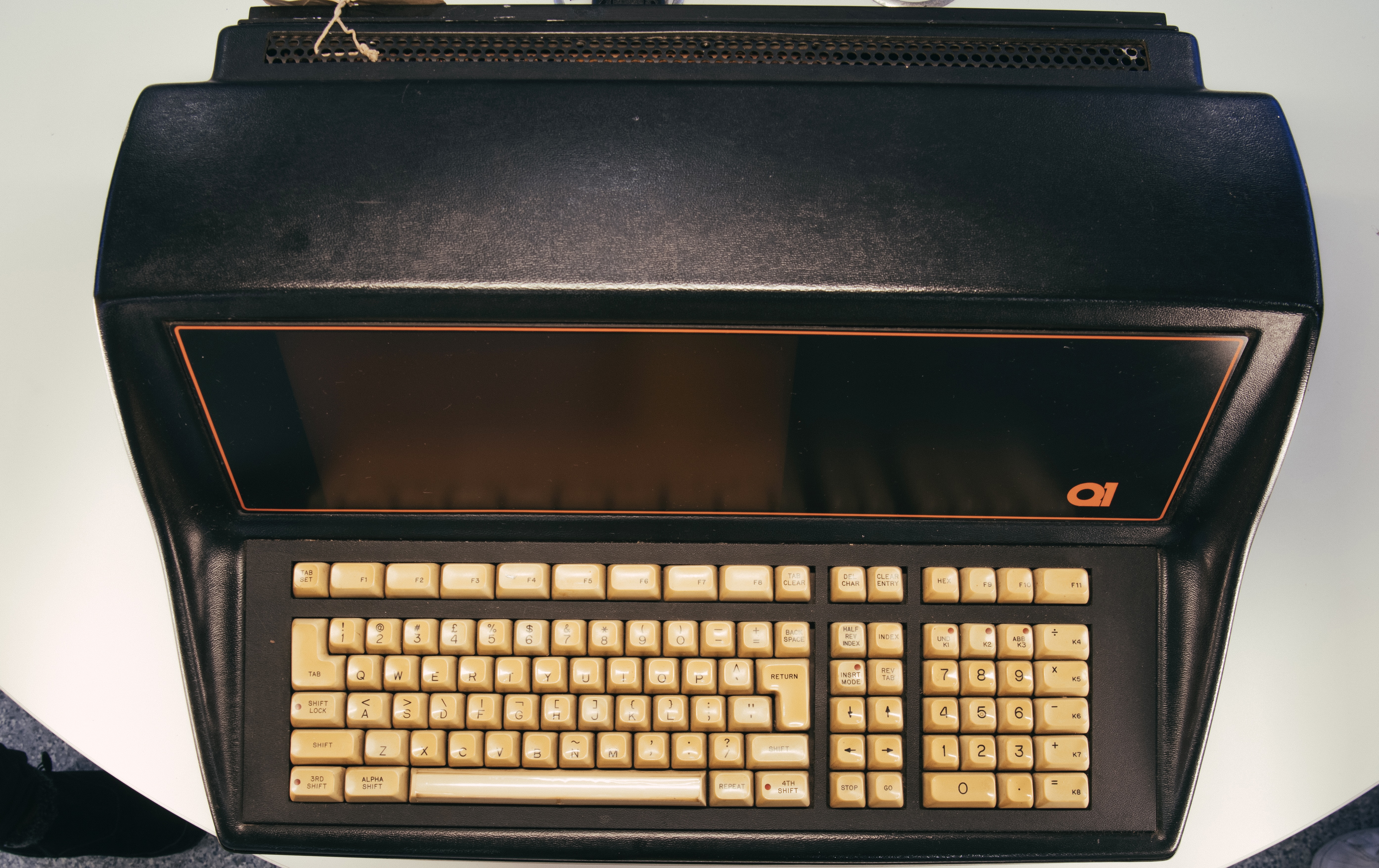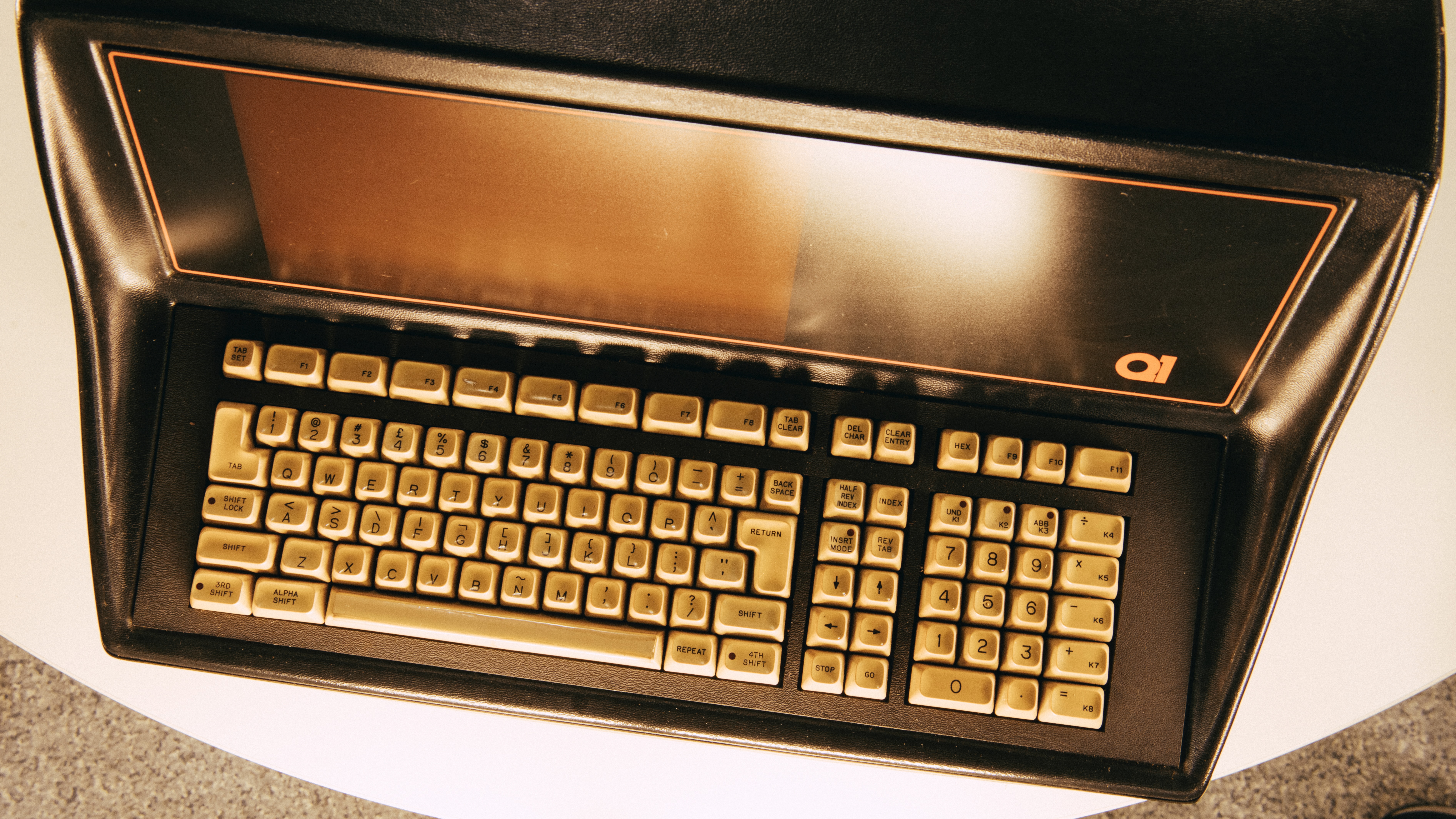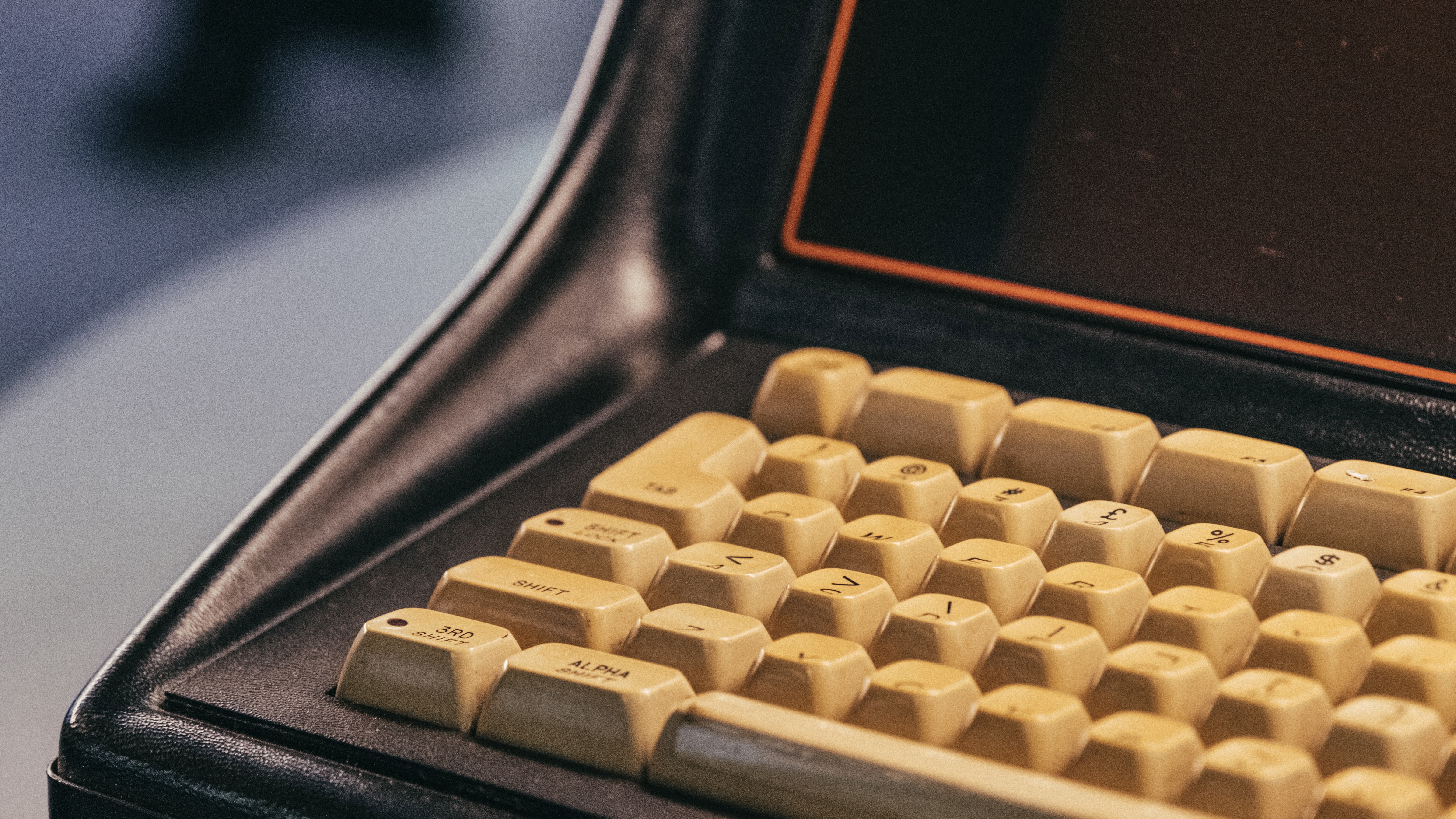
Two Q1 microcomputers, widely considered to be the first single-microchip PCs, have been found by house clearers in the U.K. The discovery brings the total number of known surviving units to three in the world.
Employees from the house-clearing company Just Clear found the two Q1s buried under several boxes while clearing out a property on Dec. 18, Just Clear's founder Brendan O'Shea told Live Science in an email. These two models were last used by an oil drilling company in the 1970s, and the other known model's location is thought to be somewhere in Scandinavia, O'Shea added.
Just Clear employees initially had no idea what they had found. O'Shea then consulted with an expert, who told him these devices were the world's first fully integrated desktop computers powered by a single-chip microprocessor.
The Q1, made by the American Q1 Corporation in 1972, was an industrial computer with an orange and black design and a plasma display, and it's viewed as the precursor to the modern desktop computer.
It marked a significant milestone in the development of computing. Computers before the Q1 were fitted with multi-chip microprocessors — but this machine was the first to be designed and powered by a single chip, the Intel 8008.
"There would be no PCs, no Macs, no Apple or Android phones without the Q1 Corporation," Paul Neve, professor of computing at Kingston University in the U.K., said in a statement. "The early pioneers in the 1970s and 1980s laid the foundation for today’s 'everything' device — the modern computer, which is so ubiquitous in everyday life."
The pair of computers were displayed temporarily in an exhibition at Kingston University called "Creating the Everything Device: Showcasing the machines that built the future", alongside several other devices that are key to the history of computing, including the ZX Spectrum and the BBC Micro. The two Q1s may now be auctioned off unless a museum or collector seeks to buy them privately.
